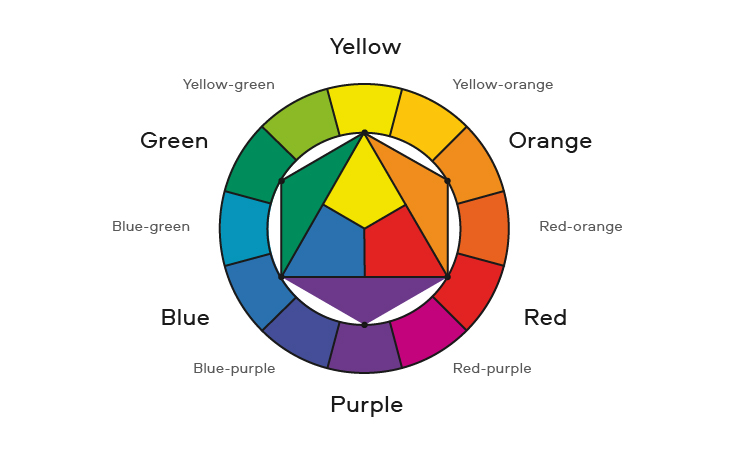The Psychology Behind Color Choices in Marketing Strategies: How Brands Influence Consumer Behavior
Meta Description: Explore the psychological principles behind color choices in marketing strategies and learn how brands influence consumer behavior through effective color use.
Color is more than just a visual element; it serves as a powerful tool that brands can leverage to evoke emotions, influence decisions, and create lasting impressions. In today’s competitive marketplace, understanding the psychology behind color choices in marketing strategies is essential for marketers, business owners, and designers alike. With over 5 years of experience in SEO, I have assisted numerous companies in optimizing their marketing tactics. This blog aims to delve into how colors impact consumer behavior and provide actionable insights for an effective branding approach.
The Importance of Color in Marketing
Why Color Matters
Colors are a universal language that elicits emotional responses, shapes perceptions, and influences choices. As consumers, our decisions are often affected by the colors we see. Research indicates that up to 85% of consumers make purchasing decisions based on color alone, emphasizing the significant role color plays in marketing strategies.
Engaging with this content will serve multiple purposes:
- Educate readers about color psychology, empowering marketers to make informed choices.
- Enhance marketing effectiveness by optimizing branding strategies.
- Increase engagement through universal appeal.
- Build authority in the field while encouraging discussion and reflection on branding choices.
Understanding Color Psychology
History and Evolution of Color Theory
The exploration of color theory can be traced back to influential figures like Johannes Itten, known for his color wheel, and Wilhelm Wundt, a pioneer in psychology.  These principles have evolved and are now pivotal in shaping how we approach marketing and consumer engagement.
These principles have evolved and are now pivotal in shaping how we approach marketing and consumer engagement.
Psychological Impact of Colors
Distinct colors can provoke specific emotions and responses. Here’s a breakdown of common colors and their psychological effects:
| Color | Psychological Impact | Common Usage |
|---|---|---|
| Red | Excitement, urgency; promotes appetite | Clearance sales, food products |
| Blue | Trust, reliability; calming | Banks, tech companies (e.g., Facebook, Twitter) |
| Green | Health, tranquility; nature-related | Eco-friendly brands (e.g., Whole Foods) |
| Yellow | Positivity, optimism; can cause visual fatigue in excess | Discount tags, spontaneous purchases |
| Black | Sophistication, luxury | High-end brands, fashion |
| Orange | Friendly, cheerful; encourages action | Call-to-action buttons, summer promotions |
| Purple | Creativity, luxury | Beauty brands, high-end products |
| Brown | Stability, reliability; associated with nature | Organic products, rustic brands |
Statistics on Color Preference
Some compelling statistics help reinforce the importance of color in consumer behavior:
- According to a study by Color Research and Application, a striking 85% of consumers make purchasing decisions based on color.
- Research from the Data Decision Group shows that 93% of buying judgments are based on visual perception, underscoring the need for thoughtful color selection in branding.
Case Studies of Successful Branding
Real-world examples illuminate the effectiveness of strategic color use in branding:
- Coca-Cola effectively utilizes red to evoke excitement and thirst, making a lasting impression on consumers.

- Apple opts for minimalist designs featuring white and grey to convey simplicity and innovation, aligning with their brand identity.
- McDonald’s combines red and yellow to stimulate appetite and create a sense of happiness, enhancing customer engagement.
Cultural Variations in Color Interpretation
Understanding cultural distinctions in color interpretation is vital for brands operating globally. For example:
- In Western cultures, white symbolizes purity and weddings.
- In Eastern cultures, white can represent mourning and loss.
Brands must adapt their color strategy accordingly to resonate with diverse audiences.
Industry-Specific Color Strategies
Color choices can vary by industry. Here are some strategies specific to different sectors:
- Healthcare: Cool colors like blue and green promote calm and safety, ideal for clinics and hospitals.
- Food and Beverage: Warm colors such as red and orange stimulate appetite and promote consumption.
- Technology: Blue hues can signify trustworthiness and innovation, fitting for tech brands.
Neuroscience Behind Color Perception
Research in neuroscience uncovers how color influences our decision-making. Studies conducted using fMRI scans reveal that our emotional responses to color are processed in the limbic system, the region of the brain responsible for emotions and decision-making.
Current Trends and Data
Recent trends in color choices across industries reflect evolving consumer preferences. For instance:
- Pantone's Color of the Year 2020—Classic Blue—not only impacted product designs but also influenced brand identities across various sectors.
- The Color Marketing Group regularly publishes data on color trends that can help marketers make informed choices.
Practical Applications and Tips
Here are actionable steps to integrate color psychology into your branding strategy:
- Conduct A/B Testing: Experiment with different color schemes to discern which yields better conversion rates on your website.
- Analyze Competitors: Evaluate your competitors' color choices to position yourself effectively in the market.
- Keep It Cohesive: Ensure that your color choices align with your brand messaging and mission.
Resources for Further Learning
If you’re interested in delving deeper into color psychology, consider resources such as:
- "The Psychology of Color in Marketing and Branding"
- Websites of organizations like the American Marketing Association or the Color Association of the United States.
Conclusion
Color is a powerful tool that can influence consumer behavior in significant ways. By understanding the psychology behind color choices and implementing these insights into your marketing strategies, you can create impactful branding that resonates with your target audience. Whether you're a marketer, business owner, or designer, the information presented here will empower you to optimize your branding strategy effectively.
Explore further, engage with our additional resources, and consider how color can transform your business's outreach and consumer connections. Embrace the potential of color in your branding strategy today!
